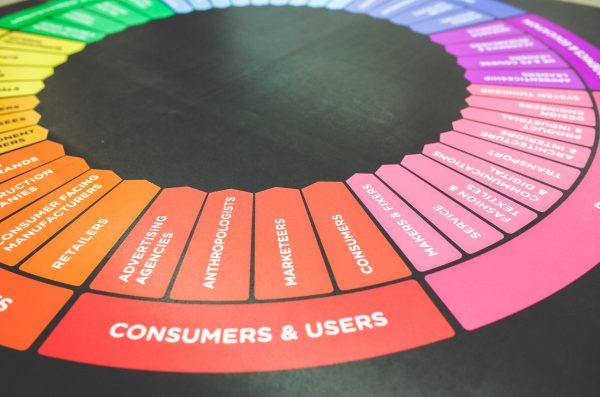How much do companies actually spend on digital marketing?
Yes, digital marketing is everything in 2022!”
“You have to invest a certain amount of your revenues for marketing.”
“Digital marketing plays a pivotal role for my company.”
We all have heard these generalized statements pop at every business seminar, reels of success stories, or even a day-to-day chat over a hot cup of coffee. But HOW MUCH? How much is enough? No one tells you this. Today, we are going to break down the factors influencing marketing budget as well as the tactics to formulate a profitable budget catered to you.
The Biggest Spenders
It is no secret that the COVID-19 pandemic has significantly changed how consumers and businesses around the world discover, buy, and sell products and services. On average, the post-covid stats portray that companies assign 11% of total company budgets for marketing specifically.
Whilst companies like Salesforce invest 46% of their total revenue in sales and marketing, its competitors such as Microsoft and Oracle spend only 16% and 22% respectively.
Imagine spending a whopping 46% (nearly half of their total revenue) only on marketing! You are bound to wonder if it was even worth it. Well, the results won’t disappoint you. The hefty investment resulted in 25% growth from the previous year for Salesforce placing them as one of the market leaders in the CRM industry with a 19.6% market share (greater than Microsoft, SAP, and Oracle)!
Yes, you are right. The investments were so worth the returns.
However, this doesn’t mean that every company that invests a fortune makes better returns. For instance, Apple assigns only 6% of its revenues to marketing but still has one of the highest returns among most companies.
Research shows that certain industries such as consumer packaged goods, consumer services, and tech software/biotech are some of the biggest spenders whereas industries like transportation, manufacturing, and energy fall in the bottom tier.
This is a clear indicator that every company has different needs and wants in which marketing holds a place of its own. Your company might still be in a growth phase and following the marketing budget strategy of a well-established brand like Apple might not be the right decision for you.
Factors influencing marketing budget
- Marketing goals
- Target audience
- Types of products
- Selected media types and their frequency
- Expected Revenue

Marketing Goals
It is vital to align the company’s marketing budget with the overall marketing goals that the company wishes to achieve. For instance, if the company wishes to launch an entirely new product in the market, it would require extensive marketing to cover all possible channels and familiarise and prepare the audience for this new product.
Target Audience
Deciding the type of media to use and ensuring that it is as effective as it can be merely hung on profiling the target audience as precisely as possible. For instance, if a product/service is meant to target millennials, a newspaper or radio advertisement might serve no purpose.
Types of Advertising Media
Not all media are right to target audiences. Apart from affecting the effectiveness of the delivery of advertising messages, media selection also affects costs. Do you want your advertisement to have a local or global reach? The budget for online media is much lower than television advertising with a very similar range. However, it is your market research about the target audience that will tell you which one will garner profits for you.

Types of Products
The type of product also determines the type of promotion used. Some items may not need intense advertising. For instance, machinery or heavy equipment takes a more B2B approach and does not require a widespread network of marketing. However, everyday products like laptops, furniture, etc take a B2C approach and need to reach a wider range of consumers.
Expected Revenue
Considering that marketing affects a lot of intangible and indirect aspects of sales, such as the consumer’s mind, it is difficult to point out exactly which marketing strategy led to a higher conversion rate. Hence, companies usually use revenue projections as a tolerance in setting their advertising budget. This is useful so that the company does not overestimate or underestimate its marketing budget.

Advertising budget methods
Companies have several options to set advertising budgets. Each of them has advantages and disadvantages. The following are four of them:
- Percentage of sales method
- Affordable method
- Competitive parity method
- Objective and task method
Percentage of Sales Method
The company allocates a marketing budget based on a certain percentage of the previous year’s total sales. For instance, the company sets a 2% -5% budget of the previous year’s revenue.
Pros:
- Low Risk
- Easy to Calculate

Cons:
- Assumes that market conditions are unchanging, including audience behaviour and competition map
- Assumes that sales are directly related marketing
Primarily, companies might need a higher marketing budget this year maybe to stand out amongst the increased competition as opposed to the previous year. Secondly, it is important to remember that advertising does not affect sales directly, but only affects how consumers perceive a product. It is only one source of information for them in making purchasing decisions and the indirect benefits are next to impossible to formulate in numbers.
Affordable method
Companies decide their marketing budgets based on the company’s financial capacity. The company prioritizes marketing at the bottom as the remaining funds (after excluding all the other expenses) are allocated to the marketing budget. This further means that if the company isn’t left with sufficient funds, it will not market the product that year.
Pros:
- Low risk
Cons:
- Marketing is not a priority, just a bonus
Competitive parity method
Firms calculate budgets according to competitors’ advertising spending or industry averages. The aim is to at least offset the effects of competitor advertising spending. If the company’s target is to exceed the competitor’s sales, the company charges higher advertising spend than them.
Pros:
- An updated understanding of where competitors stand
Cons:
- assumes that advertising budgets correlate with sales
- Assumes the uniformity of audience responses to various advertisements, whether owned by companies or competitors
Objectives and Task Method
Used by some of the most successful companies, this method is so far the most rational one.
Here, the company sets the advertising budget based on the activities or tasks consumed. The following steps fall under this method:
- The company sets concrete advertising goals.
- They determine the specific resources and activities needed to achieve these goals.
- The company determines how much it costs for each activity and adds them up to get the total cost.
Pros:
- Allows companies to correlate advertising spend with overall marketing objectives
Cons:
- High Risk Conclusion
- It might be misleading to pursue this method if the marketers have insufficient knowledge about the industry or are short of market research
Conclusion
There are multiple factors and strategies that can help you streamline your marketing budget. Figuring out exactly what your company needs requires extensive market research and an understanding of different types of media outlets that showcase your brand image the best. As a developing business, it might feel overwhelming to dive into so many things at once. Marketing is a whole world in itself. We hear you.
TheAd is here to help you out throughout the process and customize it specifically for you. Book a free consultation or give us a call today!









